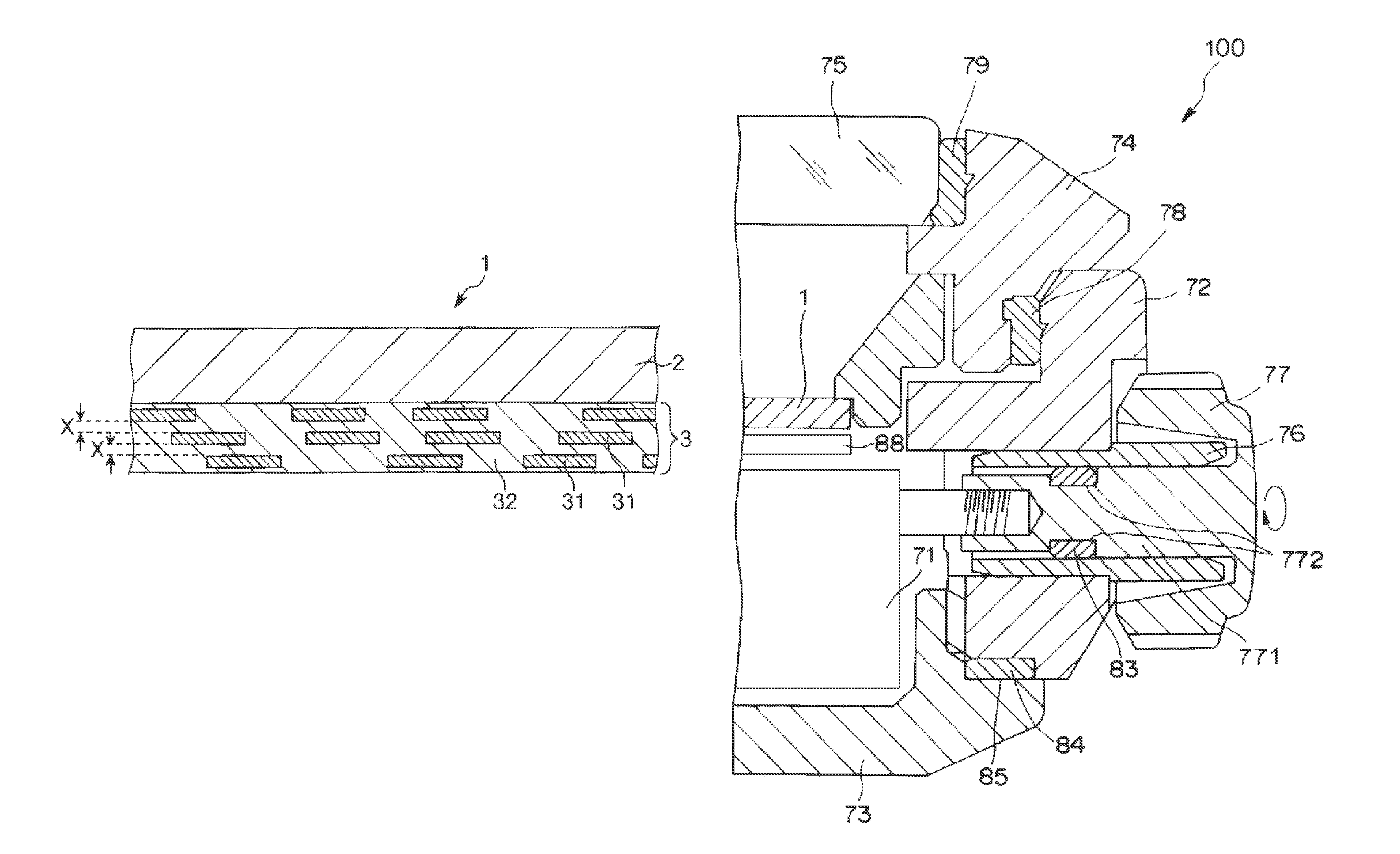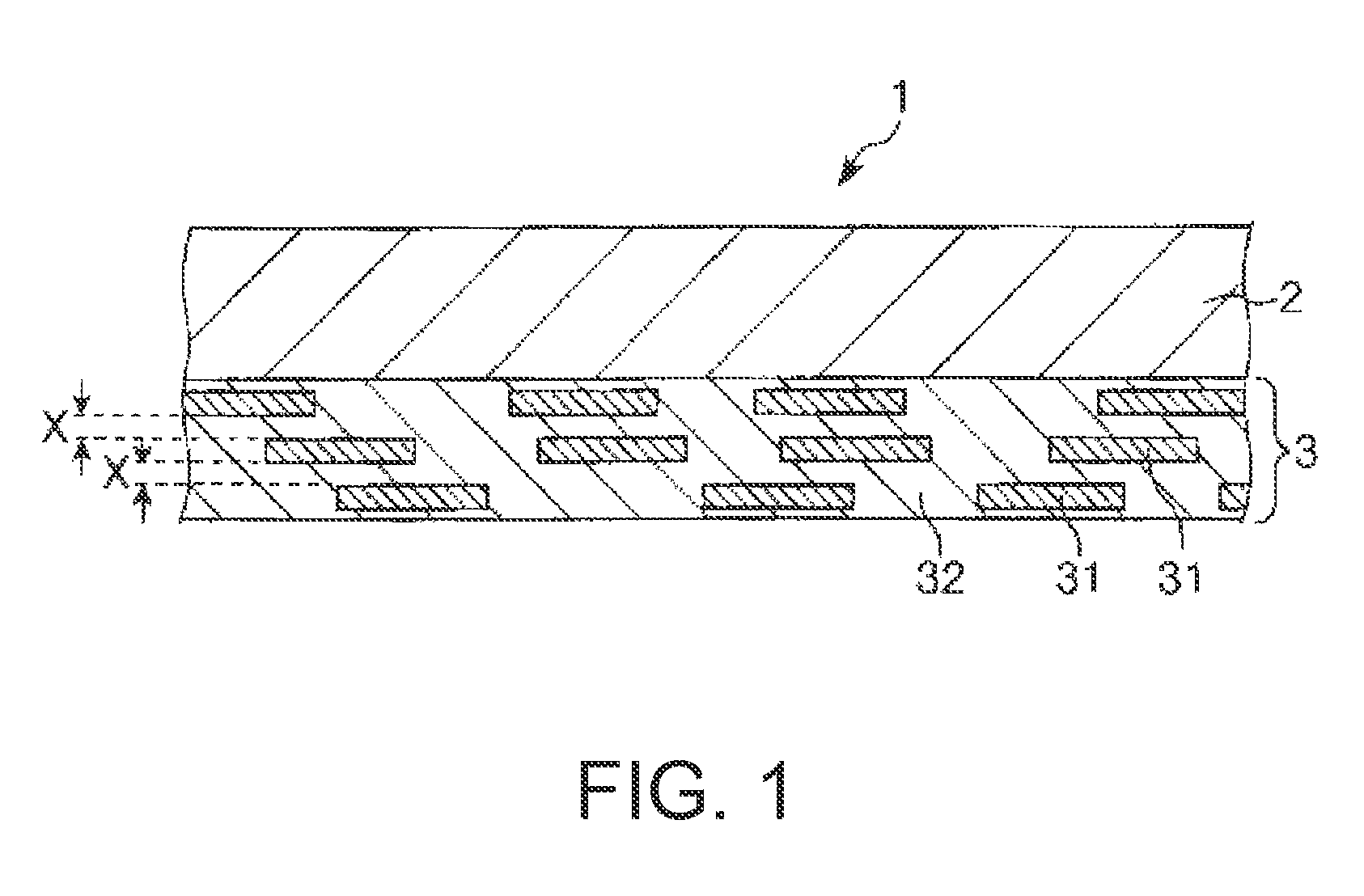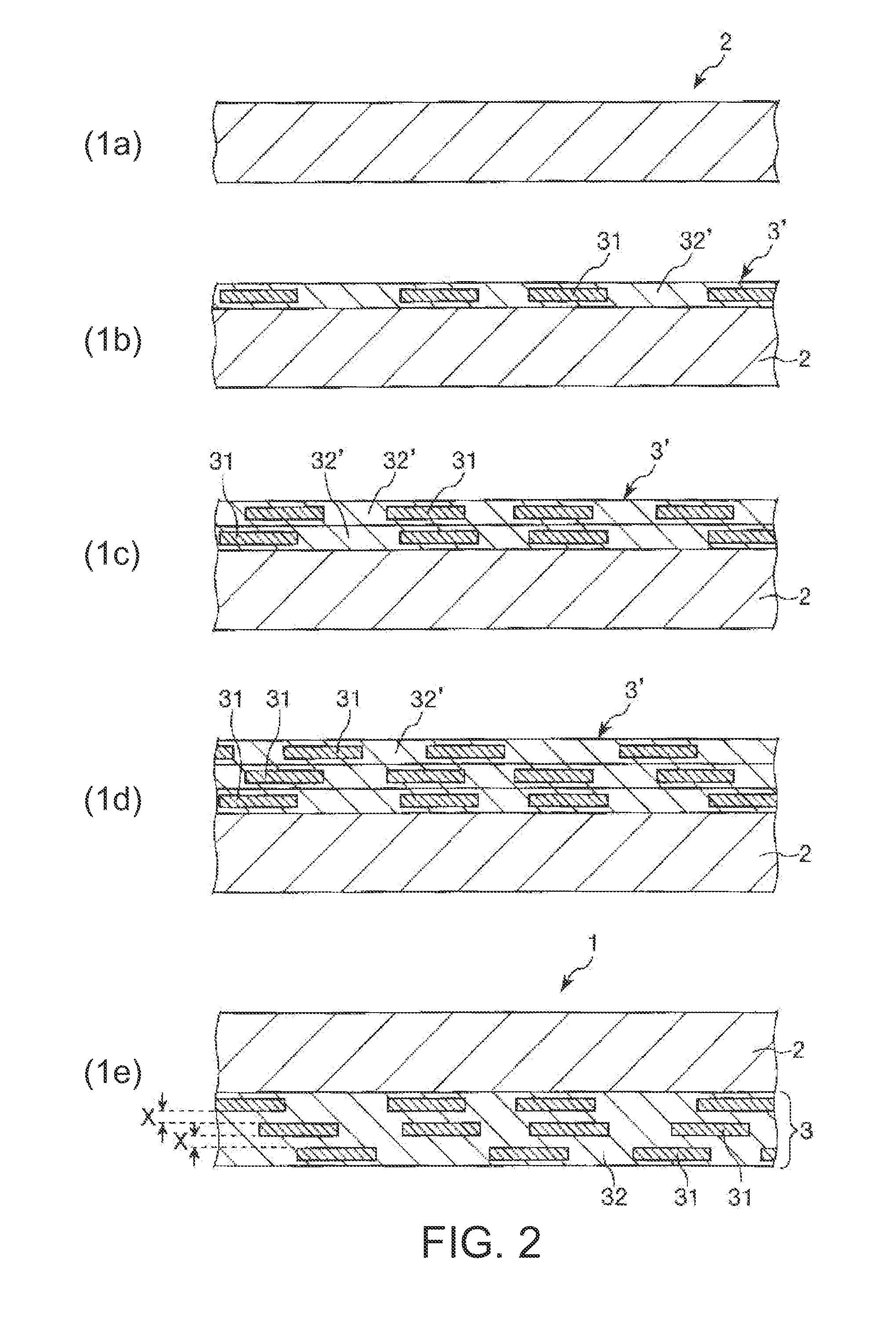Timepiece dial, method of manufacturing a timepiece dial, and a timepiece
a manufacturing method and dial technology, applied in the field of timepiece dials, can solve the problems of low dial production efficiency, metal foil is easily wrinkled, lack of luxury and attractive appearance of plastic, etc., and achieve the effect of outstanding appearance and electromagnetic wave transparency
- Summary
- Abstract
- Description
- Claims
- Application Information
AI Technical Summary
Benefits of technology
Problems solved by technology
Method used
Image
Examples
examples
[0137]Specific examples of the invention are described below.
[0138]1. Manufacturing a Timepiece Dial
[0139]Using the methods described below, 100 timepiece dials were manufactured as embodiments of the invention and 100 timepiece dials were manufactured as comparison samples.
embodiment 1
[0140]A substrate with the shape of a timepiece dial was manufactured from polycarbonate by compression molding, and was then cut and polished as needed. The resulting substrate was substantially round with an approximately 27 mm diameter and approximately 0.5 mm thickness (substrate preparation process). The maximum peak-valley height Ry of the substrate surface is ≦100 μm and was ≦2 μm. In addition, the surface roughness Rz of the substrate surface is ≦20 μm and was ≦0.3 μm.
[0141]This substrate is then cleaned. The substrate was cleaned by dipping in an alkaline degreasing solution for 30 seconds followed by neutralization for 10 seconds, a water wash for 10 seconds, and a demineralized water wash for 10 seconds.
[0142]A dispersion containing Al powder (metal powder) with square particles when seen in plan view was then formed three times on one side of the cleaned substrate by spray coating (dispersion application process).
[0143]Spray coating was performed to apply the dispersion ...
embodiments 2 to 10
[0147]Timepiece dials were manufactured in the same way as in embodiment 1 except for changing the composition of the dispersion used to make the dispersion film, the composition of the substrate, and the conditions of the dispersion application process and heat process as shown in Table 1.
PUM
 Login to View More
Login to View More Abstract
Description
Claims
Application Information
 Login to View More
Login to View More - R&D
- Intellectual Property
- Life Sciences
- Materials
- Tech Scout
- Unparalleled Data Quality
- Higher Quality Content
- 60% Fewer Hallucinations
Browse by: Latest US Patents, China's latest patents, Technical Efficacy Thesaurus, Application Domain, Technology Topic, Popular Technical Reports.
© 2025 PatSnap. All rights reserved.Legal|Privacy policy|Modern Slavery Act Transparency Statement|Sitemap|About US| Contact US: help@patsnap.com



